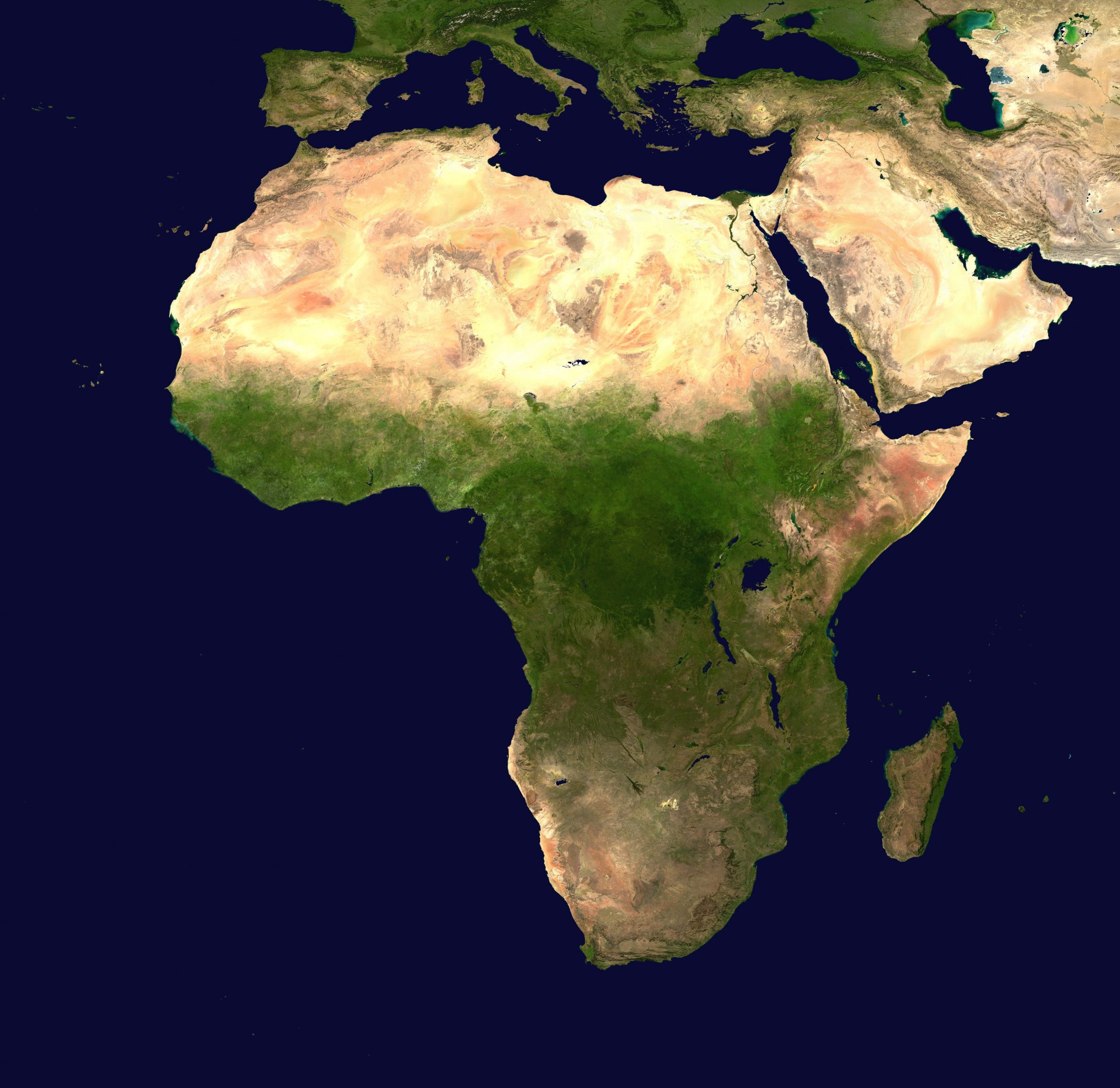The lack of financing for climate projects in Africa is a major obstacle for the continent to reach its goals under the Paris agreement. In this critical year for climate finance, scattered efforts threaten to stymie real progress.
At the 2023 Summit for a New Global Financing Pact in Paris, French president Emmanuel Macron stated that “policymakers and countries shouldn’t ever have to choose between reducing poverty and protecting the planet”. This may be true, but if European policymakers want to make significant advances on climate finance flows in Africa, they need to make some hard choices about where to direct their resources.
2024 is a decisive year for climate finance: the next United Nations Climate Change Conference (COP29) in November will focus on climate finance, while the World Bank’s concessional lending arm, the International Development Association, will begin replenishing its funds as part of the next fundraising cycle. But current policy proposals do not sufficiently recognise the harsh resource and political limits that constrain any increases in climate financing. Discussions at summits and high-level forums have often adopted an abundance mindset, rather than a scarcity one, generating a staggering number of different climate finance policy proposals. This has resulted in a lack of focus. With COP29 only a few months away, it is not clear what the major policy focus is for Europe.
Europeans have an interest in pushing for greater climate finance in Africa. The lack of affordable finance for climate projects in Africa is a key barrier for the continent to reach its adaptation and mitigation goals. African countries have also expressed significant dissatisfaction with the global financial system, which has held back the Europe-Africa relationship. Now, with the decline of Chinese investment in Africa, there is an opportunity for Europe to strengthen its role as Africa’s partner of choice.
But European policymakers need to engage with an inconvenient truth: political and financial capital are limited, and they need to prioritise where resources should flow. The technically, politically, and legally complicated nature of many policies in climate finance means that implementing any of the proposed solutions is a difficult task. Europeans have so far spread these resources too thinly over an array of policy proposals and thus struggled to make breakthroughs in different areas. Fixing the funding gap will require greater focus.
Limited capital and unclarity
African countries will require an estimated $2.5 trillion of external financing between 2020 and 2030 to implement their nationally determined contributions under the Paris agreement. Current flows fall far short, with the financing available amounting to just 12 per cent of this goal.
This is because all potential providers of financing to African countries either have limited funds or are unable to transfer them. The most obvious funders of climate finance on the continent – African countries themselves – do not have access to affordable finance. This is largely the result of “higher-for-longer” interest rates on international borrowing, which have priced out many African countries. These high interest rates have also constrained the flow of resources from developed countries or from multilateral development banks (MDBs). Meanwhile, reduced fiscal space and the drift to the right in many European countries caused total overseas development aid from traditional donors to least developed countries to fall in 2023. And while ambitions to overhaul MDBs are laudable, they are unrealistic in the short-to-medium term, with geopolitical competition between China and the United States limiting any major capital increases or shareholder changes at the World Bank and IMF.
There is also limited political capital to build enough momentum to make advances on an array of climate policies. Major climate finance proposals, such as the rechannelling of special drawing rights (SDRs) – a type of reserve currency issued by the IMF – are often seen by developed countries as low priority and high difficulty. Low priority because increased geopolitical tensions mean European countries are more preoccupied with security and domestic issues over development, and high difficulty due to the technical and complicated nature of climate finance. Indeed, whether or not a policy in the climate finance space is successful depends on a series of complicated legal, financial, and political considerations. European policymakers will need to focus significant political capital to make policy breakthroughs in this area.
The abundance mindset
Despite this sharply negative international economic outlook, major declarations and events on climate finance have not framed their proposals with this limitation in mind. The Bridgetown Initiative, for example, spearheaded by Barbadian prime minister Mia Mottley, called for $1 trillion in additional multilateral lending (on top of the current approximately $700 billion), numerous mechanisms for debt relief, a new issuance of $500 billion SDRs, and “reconstruction grants for any country just imperilled by a climate disaster”. Meanwhile, the summary of the Paris financing summit suggested 11 different action points, and the Nairobi Declaration resulting from the Africa Climate Summit in Kenya in September called for approximately 54 different policies to address climate issues in Africa.
The reason for this is obvious: these summits and initiatives are political events for European countries to demonstrate their commitment to increasing funding and for African and developing countries to call for more. And their multi-stakeholder format makes it hard to distil the views of everyone at the table into a few, clear points. But Africa’s climate finance needs are too urgent to continue to live in this abundance mindset.
In focus
If European policymakers can agree on where to focus their efforts, they can move reforms within the World Bank and IMF and increase climate finance to Africa despite the constrained international economic environment.
A key example of the importance of focus is the long and protracted process of rechannelling SDRs. The reserve currency initially seemed a highly promising policy option for increasing climate financing to African countries. Following the economic shock of covid-19, the IMF allocated SDRs at a dramatic scale, issuing $650 billion in SDRs. But as they are distributed according to the respective shares of IMF member states, this allocation left numerous high-income countries with significant amounts of SDRs that they did not need. As a result, the G20 pledged in 2021 to rechannel $100 billion of their SDRs to developing countries.
In response, and as a result of increased financial and political focus at the time, the IMF set up the Resilience and Sustainability Trust (RST), to support the pre-existing Poverty Reduction and Growth Trust (PRGT). The IMF and G20 intended that the two trusts could use the SDRs from high-income countries to lend concessionally to low-income countries.
However, since then, a loss of political momentum along with numerous legal challenges have hindered SDR rechannelling. Both the PRGT and RST have hit capacity, partially due to a lack of subsidies and staff at the IMF, and as a result cannot take on more SDRs. This has left $47.5 billion worth of SDRs without a rechannelling mechanism. Moreover, both bodies have struggled to disburse funds to low-income countries due to IMF regulations about which countries can receive funding from the RST. Other workarounds have also proved difficult. Some central bank chiefs, such as president of the European Central Bank Christine Lagarde, have blocked efforts to rechannel SDRs through other MDBs, such as the African Development Bank. Almost three years after the $100 billion pledge, less than $1 billion have been disbursed to developing countries.
Crucially, some proposals, such as the African Development Bank’s hybrid capital proposal, as well as the concept of SDR-linked bonds put forward by Brad Setser, Stephen Paduano, and Théo Maret, show viable, alternative pathways for rechannelling SDRs. With a focusing of political resources aimed towards adapting and clarifying eurozone regulations and a greater allocation of subsidy resources, the IMF could successfully utilise SDRs for climate financing.
In the run-up to COP29, and with financial and political capital limited, European and African policymakers need to make some hard choices and bet on specific policies. They need to choose where to focus their attention and resources to make significant changes and accept that not all of the climate finance proposals can be winners. The Bridgetown Initiative even acknowledged this need, noting its aim to “support progress … through greater understanding, focus, priority, co-ordination and unity of effort”. If European policymakers do not agree on a focus, both they and their African counterparts could leave COP29 with nothing to show for all their efforts.
About the author:
Ameer Chughtai is a research assistant in the Africa programme at the European Council on Foreign Relations. His work mainly focuses on peace and security in the Horn of Africa and Sahel, UN/AU peace operations, and development.


